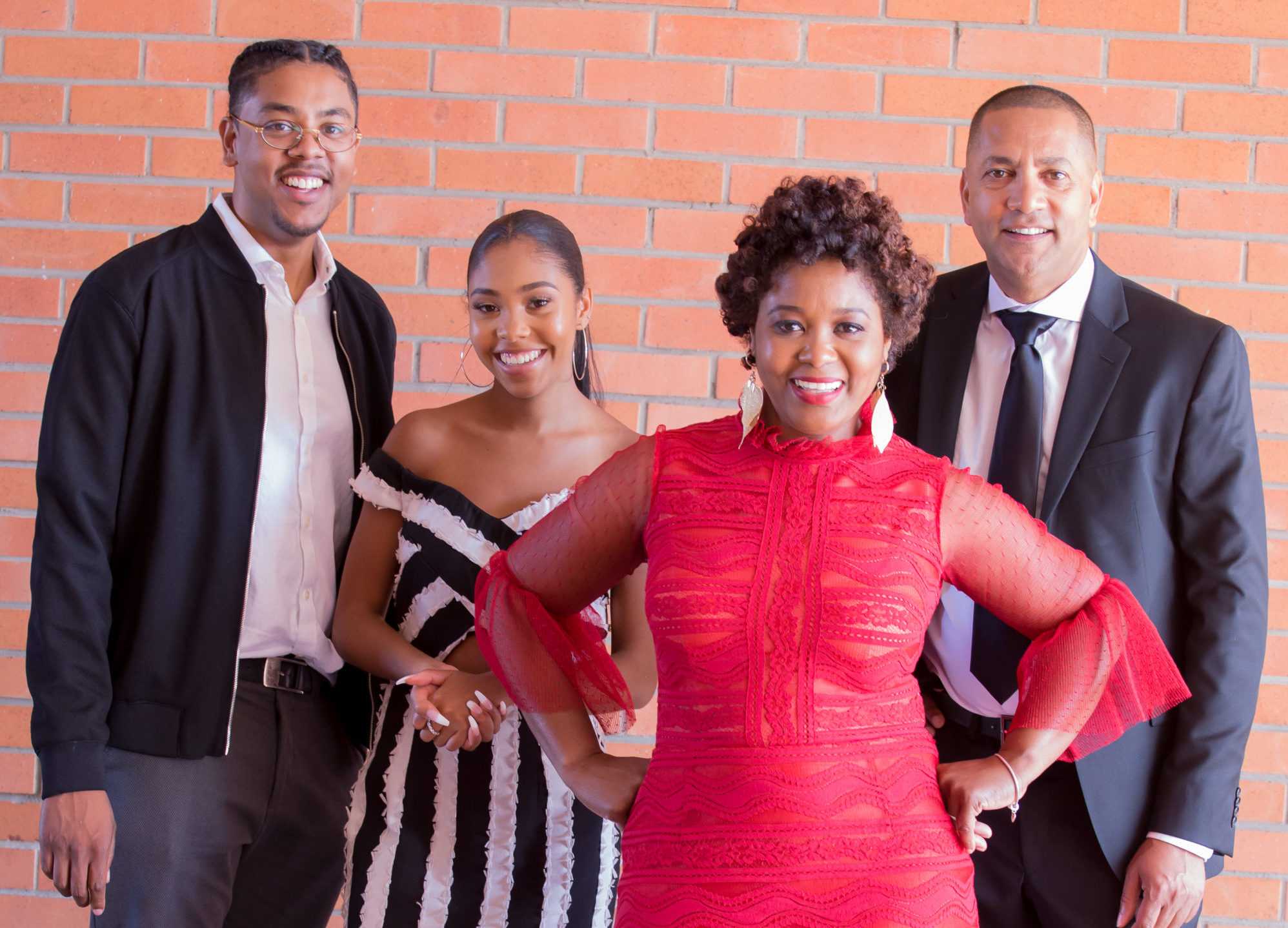BY SIMONE J. SMITH
Jillian, Warren, Myles and Milan Danford have become the new face of the Caribbean family. Each week, 22,000+ viewers tune in to watch the first Caribbean family reality show headed up by the ever popular Jillian Danford, or as many of us know her as Auntie Jillian. Auntie Jillian first appeared on her niece’s YouTube Channel LaToya’s Life (later renamed The Ali’s), and fans fell in love with her quick-witted banter, and her answers to life’s most difficult questions. Seeing the success that her auntie was having on the show, Latoya created a YouTube Channel for her aunt as a spin-off series. When it was discovered that Auntie Jillian had 11,000 followers and had not even posted a video, they knew that they had something.
Up until that point, Auntie Jillian was happy with just appearing on her niece’s show from time to time, and she admits that she did not really pay any attention to social media. Thank God for good family and friends, because a group (affectionately known as The Coalition) sat her down and opened her eyes to new possibilities; this moment of clarity helped Auntie Jillian see the attraction that she drew, so she took the bull by the horns and went forward with this gifted opportunity. She decided to get her family involved and this is how Auntie Jillian was birthed. The Danfords are now paving a way for other black Canadian content creators, and there is something to be noted; the family thought strategically, and they now maintain the intellectual property rights to Auntie Jillian.
Now in their second season (slated to air in the spring 2020) Toronto Caribbean Newspaper took a trip to Pickering last week to sit in on the taping of Auntie Jillian. I am not going to give too much away because I want you all to go ahead and subscribe to Auntie Jillian on YouTube, and also find them on Bell Fibe TV1 (the network’s streaming platform). Auntie Jillian and her son also brainstormed how to reach global audiences, and created a user-friendly solution through their pay-per-view services that are available exclusively on www.itsarealting.com, where fans can watch episodes from Season One.
When I arrived, Auntie Jillian was standing there waiting for me; I was instantly captivated by her radiant energy and smile. Production was on the way, but I was quickly introduced to Milan and Warren. They were in the middle of a shot, so Auntie Jillian sneaked me away to talk for a little. “I never thought that I would be doing this Simone; who knew that people would be interested in the things that happen with my family,” Auntie told me chuckling. “Knowing that we are making history is amazing, and it is good to be able to show people that we are everyday people, just like them. I think that it does give people hope; raising children is hard, marriages are hard. We all face our individual struggles, but we do it as a family and people need to see that.”
I also had an opportunity to speak with Myles and Milan. Miles had shot his scenes for the day and left, but he came back to meet with me, and chit chat a little. When I asked him what it was like to have so many followers he told me, “You know what, I don’t even watch that. I have my family and they keep me humble; of course I get noticed, but I don’t let it get to my head. I was only able to speak with Milan for a bit, but our conversation was focused more on our love for nails; I had admired hers, and she admired mine. She was happy to hear that it was a young, Jamaican woman who had done it for me, and we joked around a bit. I will admit, for a moment I felt like one of the family.
Whether it is Warren trying to pass down his Jamaican cooking heritage to Myles, or Myles having an enlightening conversation with granddad about gunja, this family is sure to have you in stiches. Toronto Caribbean Newspaper is proud of the work that the Danford’s are doing, and we encourage the community to check out Auntie Jillian and continue to lend your support to the first Caribbean family on reality TV in Canada.


Cynthia Thomas
November 13, 2019 at 6:50 pm
I follow Auntie Jillian and love to see how simple family challenges are solved in an easy natural way. Its really de real ting. Congratulations to the family. Looking forward to many more ways to everyday problems as well as joys.
emti
November 14, 2019 at 3:27 pm
CONGRATS
coalition4life
Fay Williams-Benn
November 19, 2019 at 12:29 am
Congrats Auntie Jillian and family! Wishing you all continued success in your future episodes. 😘🙏🏽🙏🏽